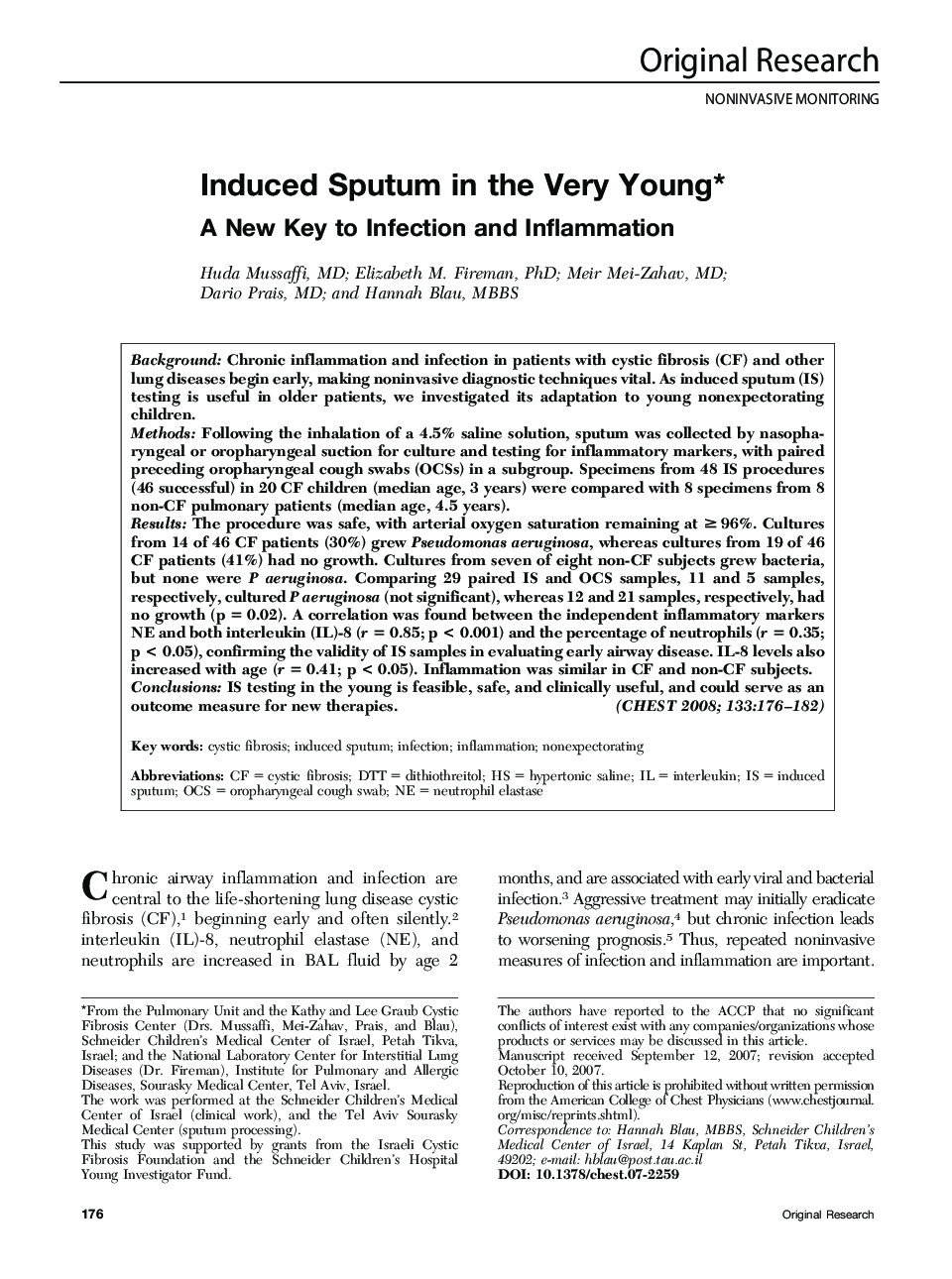| Article ID | Journal | Published Year | Pages | File Type |
|---|---|---|---|---|
| 2904094 | Chest | 2008 | 7 Pages |
BackgroundChronic inflammation and infection in patients with cystic fibrosis (CF) and other lung diseases begin early, making noninvasive diagnostic techniques vital. As induced sputum (IS) testing is useful in older patients, we investigated its adaptation to young nonexpectorating children.MethodsFollowing the inhalation of a 4.5% saline solution, sputum was collected by nasopharyngeal or oropharyngeal suction for culture and testing for inflammatory markers, with paired preceding oropharyngeal cough swabs (OCSs) in a subgroup. Specimens from 48 IS procedures (46 successful) in 20 CF children (median age, 3 years) were compared with 8 specimens from 8 non-CF pulmonary patients (median age, 4.5 years).ResultsThe procedure was safe, with arterial oxygen saturation remaining at ≥ 96%. Cultures from 14 of 46 CF patients (30%) grew Pseudomonas aeruginosa, whereas cultures from 19 of 46 CF patients (41%) had no growth. Cultures from seven of eight non-CF subjects grew bacteria, but none were P aeruginosa. Comparing 29 paired IS and OCS samples, 11 and 5 samples, respectively, cultured P aeruginosa (not significant), whereas 12 and 21 samples, respectively, had no growth (p = 0.02). A correlation was found between the independent inflammatory markers NE and both interleukin (IL)-8 (r = 0.85; p < 0.001) and the percentage of neutrophils (r = 0.35; p < 0.05), confirming the validity of IS samples in evaluating early airway disease. IL-8 levels also increased with age (r = 0.41; p < 0.05). Inflammation was similar in CF and non-CF subjects.ConclusionsIS testing in the young is feasible, safe, and clinically useful, and could serve as an outcome measure for new therapies.
